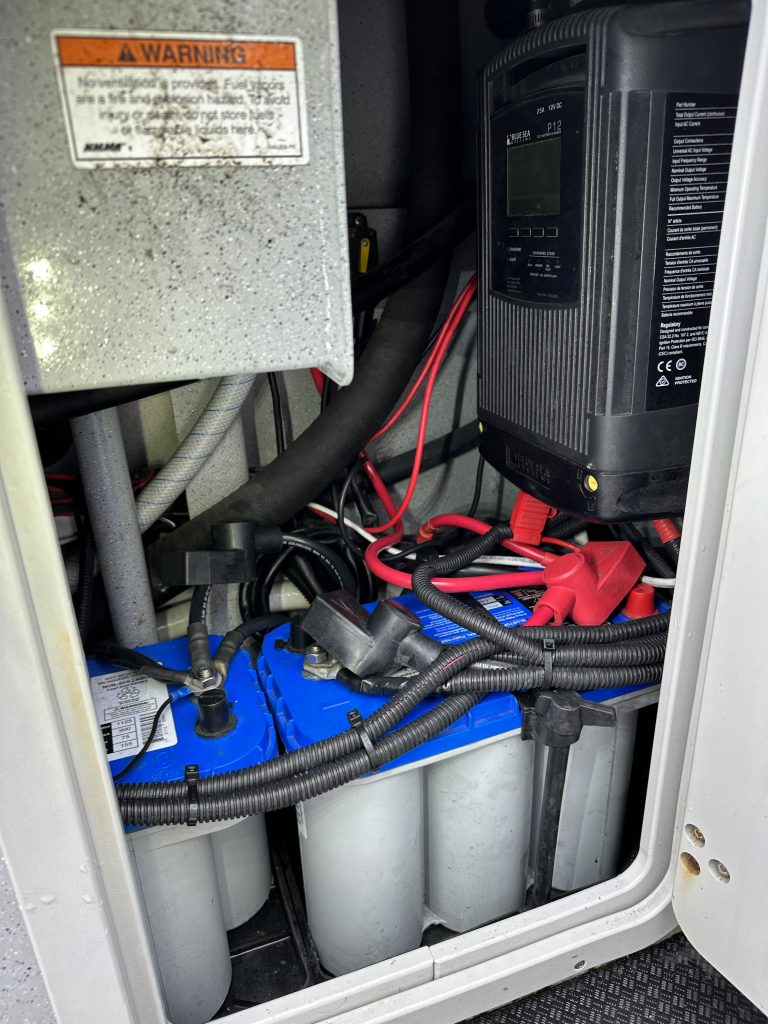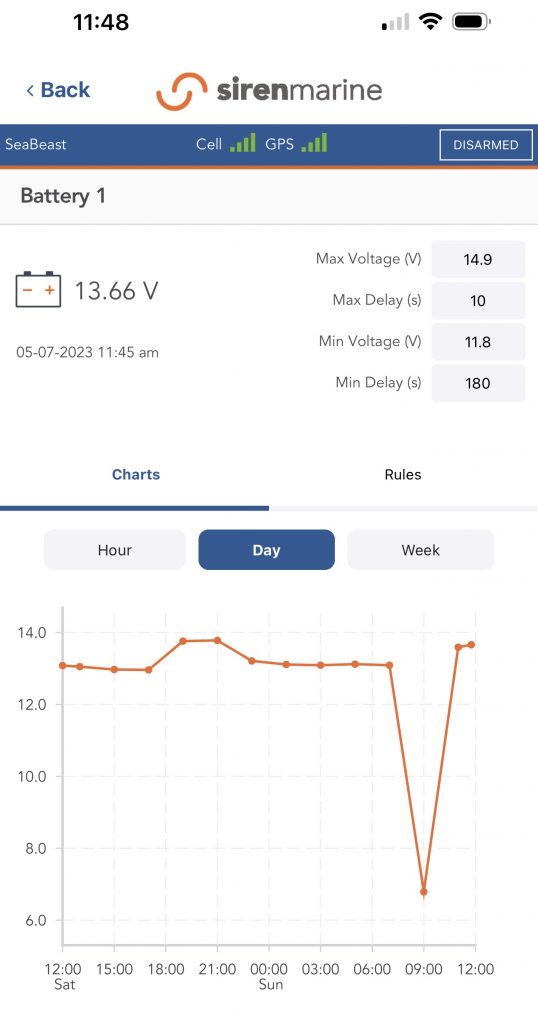More (12 Volt) Power to YOU! Knowing the practical differences between a deep cycle and a starting battery will keep you in the juice! Leave a reply
Every boat -no matter what size- has a personality borne of it’s design, power configuration and electrical system. The bigger the boat, the more complex the vessel’s “personality” and the longer the learning curve you’ll have getting to know her. So after four years running the Duckworth 30 OSXL “SeaBeast”, I have absolutely come to know -and love- this magnificent machine but I also know that going my fifth season with the original batteries was a risk that I was unwilling to take.

The electrical demand aboard our boats has never been higher with multiple MFD’s, radar, FLIR, heaters, 12V refrigerators, lighting and pumps. Add electric downriggers and reels to the mix and the amp draw is daunting to say the least! One of the most important aspects of building and maintaining a robust, dependable and durable marine electrical system is understanding that there are really two types of electrical demands on board. Short duration (Starting/Cranking) and long duration (Deep Cycle) applications require two different battery construction types. Deep cycle batteries have less instant energy than Starting batteries, but greater long-term energy delivery needed for long periods of demand between charging cycles.
When making my selection for replacement batteries this spring, I opted for a pair of “Dual Purpose” Starting/Deep Cycle batteries. Little did I know that I was about to learn an important electrical system lesson. The dual purpose spiral construction Group 31 AGM’s sported a solid 900 CCA or Cold Cranking Amps but only 75 AH or Amp Hours; indicative of it’s marginal potential for longer-term or deep-cycle performance. I first noticed an issue when voltage began to drop below 12 volts despite the fact that the auxiliary or trolling motor was running. After several attempts at trouble-shooting/diagnosing the issue, I went back to basics, looking at the source and found that a battery with more capacity was the answer!

Nothing like a Sunday Morning boat project at the Port of Everett. If only I could get Bailey to haul the dock cart down to the slip!

So what is the best battery technology available to serve as a bullet-proof house bank boasting high capacity and superior durability? GREAT QUESTION! The answer is the new RELION lithium technology known as “LiFePO4” featuring a internal Battery Management System or “BMS” that protects the battery from charging damage. Lithium batteries can generally discharge between 90 and 95% whereas AGM batteries can typically handle up to 50%. This means that lithium batteries can maintain 12 volt power longer with each single charge than their AGM alternatives. And it also means that they are less exposed to the damage that comes with exceeding the depth of discharge. All of this while only weighing half as much as lead/acid cells.





The Blue Seas Systems P12 on-board battery chargers on the Duckworth SeaBeast do not have a specific charging profile for Lithium batteries but according to the manufacturer, the AGM setting will suffice. Owing to the increasing popularity of LiFePO4 technology, most new chargers like the excellent, new Minn Kota units do indeed feature a Lithium battery charging profile. The final issue we need to discuss is cost. Currently these Lithium batteries are twice as expensive as the highest quality AGM’s. However, this is offset by their amazing service life. Lithium marine batteries will typically last 3,000-5,000 charge cycles. This usually translates to lithium batteries lasting ten years or longer. If that’s the case the cost per year is a push and if I don’t have to wrestle batteries as often, it’s a deal!

